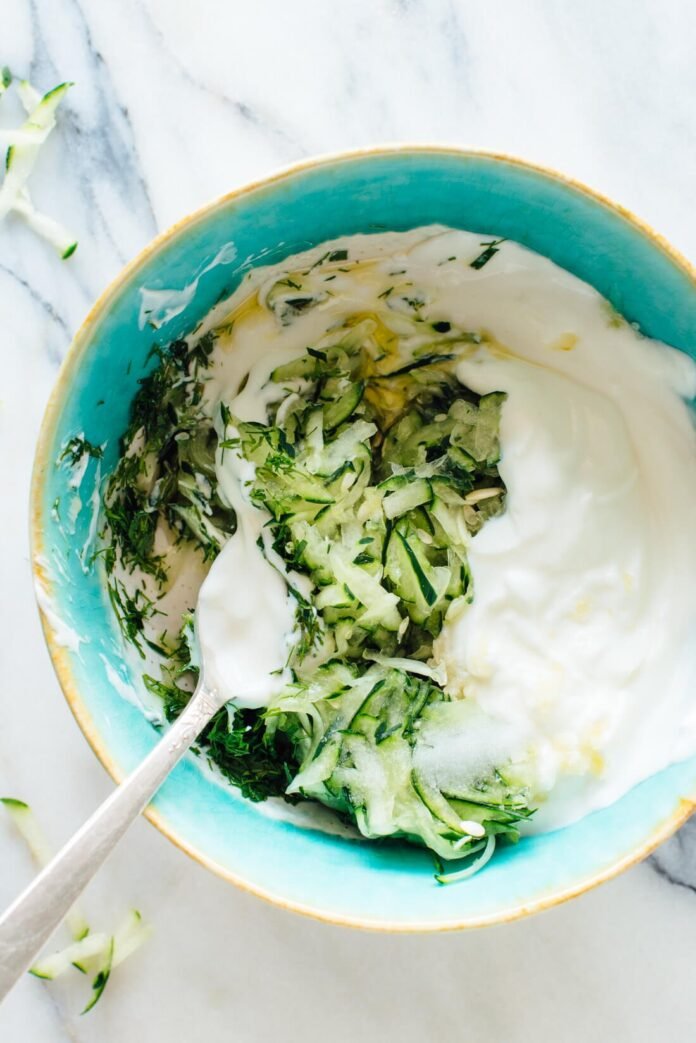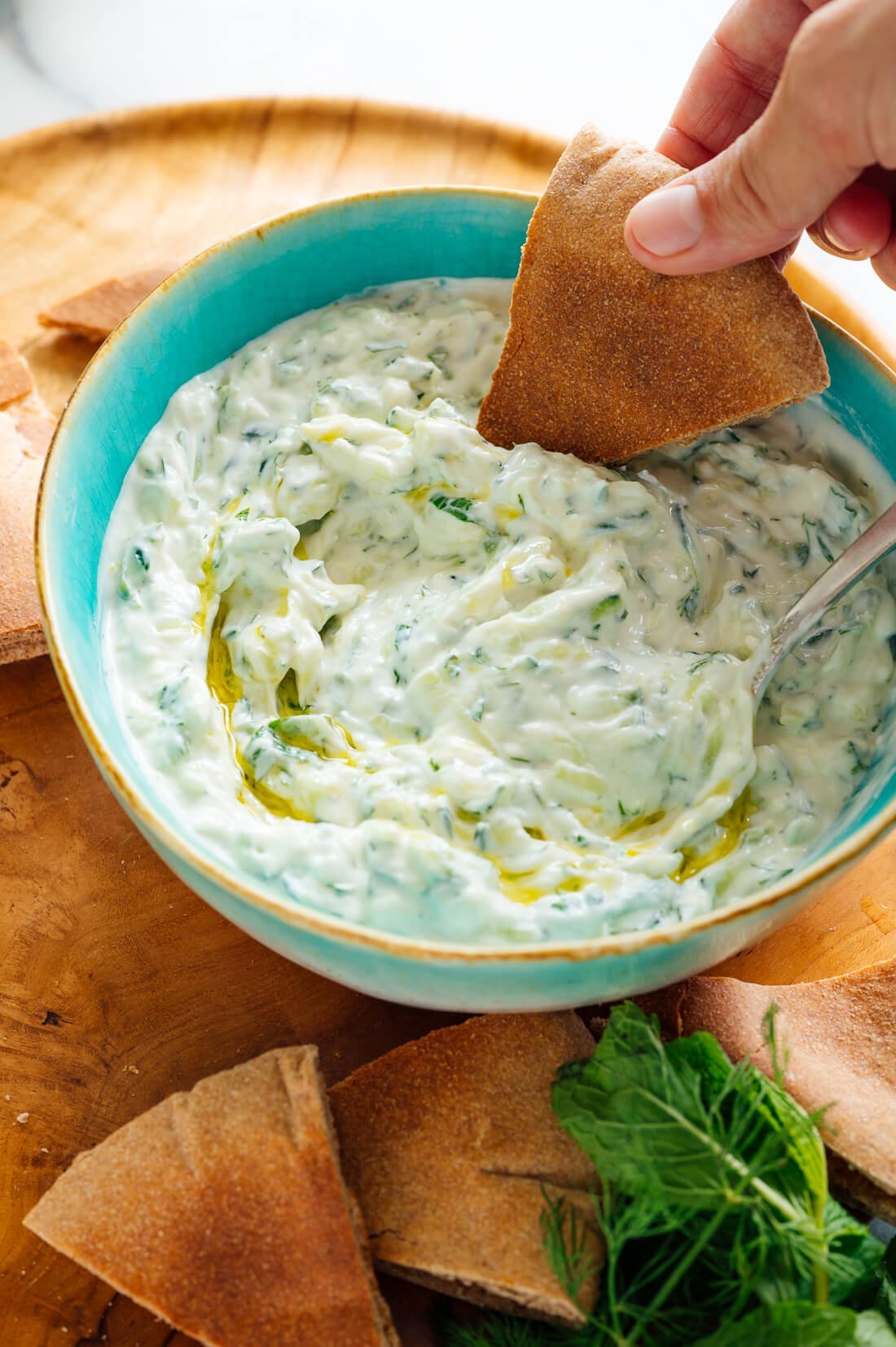
Tzatziki! Tsaht-ZEE-kee! Otherwise known as that yogurt and cucumber sauce you love at Greek restaurants but worry about mispronouncing (hear the correct pronunciation here).
Tzatziki is made simply with yogurt, drained cucumber, olive oil, fresh herbs (usually mint or dill), garlic, lemon juice and salt. It’s a refreshing chilled sauce, dip or spread.
I traveled to Greece last fall and ordered tzatziki at every restaurant. I’m serious. I enjoyed tzatziki with every single meal, even breakfast. This recipe tastes just like authentic tzatziki.
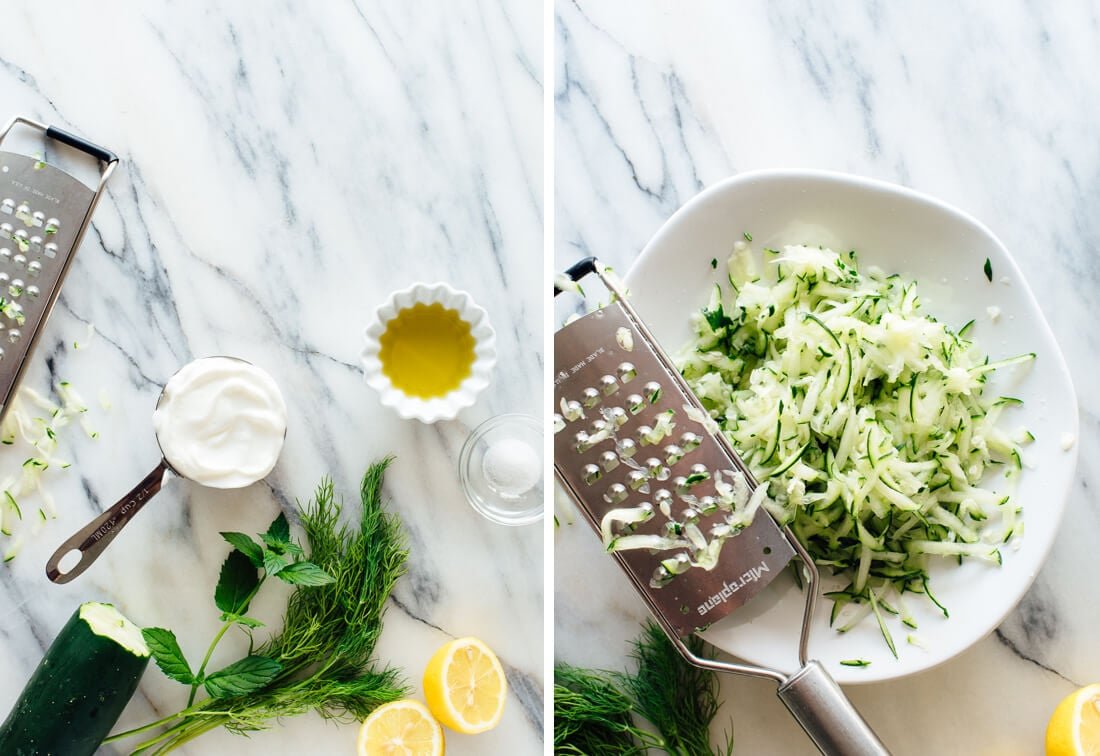
I tend to associate tzatziki with Greek food, but you’ll find it served across the Mediterranean and Middle East, sometimes under different names or in slightly different forms.
Tzatziki is often served with grilled meats and gyros, but I can’t think of a grilled or roasted vegetable it wouldn’t play nicely with. You can also serve up some tzatziki with your next appetizer spread. Let’s make some already!
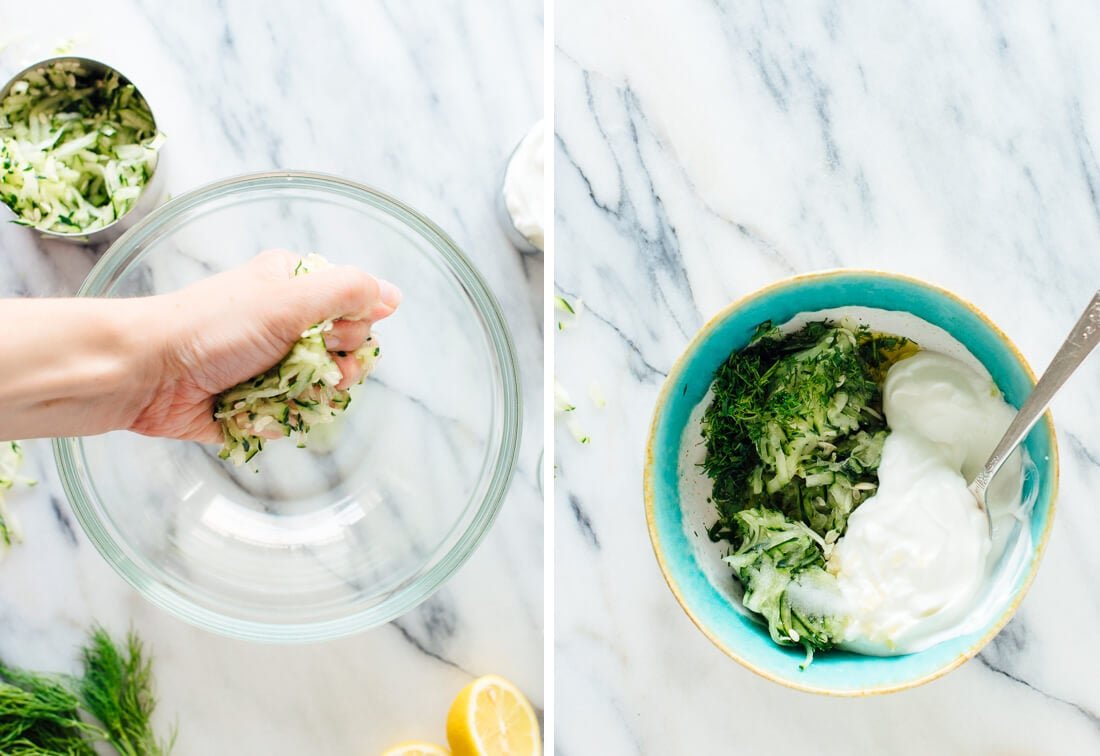
Uses for Tzatziki
Grilled Vegetables
- Bell peppers
- Mushrooms
- Carrots
- Asparagus
- Green beans
- Corn on the cob
Appetizer Spreads
- Toasted pita wedges
- Crisp raw vegetables
- Olives
- Cheese and crackers
- Hummus
- Zhoug or Shatta (Middle-Eastern hot sauces)
Falafel, Sandwiches and Salads
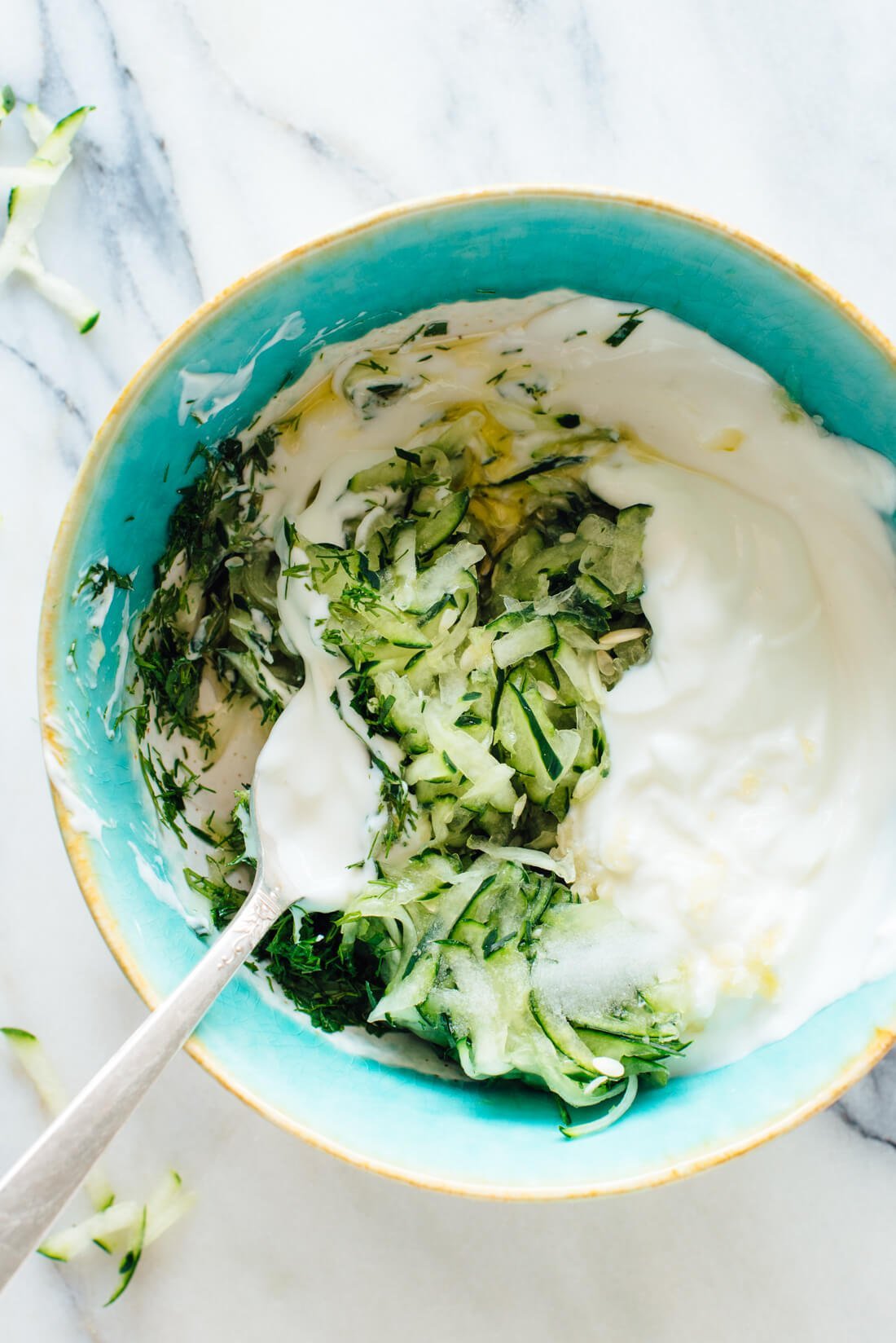
My Tzatziki Technique
Fortunately, tzatziki is super easy to whip together. The only trick is to properly drain the cucumber before mixing it into the yogurt. Otherwise, cucumber waters down the sauce too much. Salting the grated cucumber and letting the excess moisture drip out takes a while.
The easiest and most efficient way to get rid of the excess moisture is to lightly squeeze the grated cucumber over the sink. The only wait required in my recipe is to let the tzatziki rest for five minutes after you mix it all together, to let the flavors meld. At that point, you can serve it right away or chill it for later.
Tzatziki Nutrition & Yogurt Notes
Nutritionally speaking, tzatziki is a creamy but light sauce. You can dollop it generously on your food without adding a lot of calories (unlike, say, mayonnaise or ranch dressing). It’s made mostly with Greek yogurt and cucumber, after all.
I haven’t found a noticeable difference in texture whether I use whole-milk yogurt, low-fat or non-fat, so any of those will work. Traditional Greek tzatziki is made with strained goat or sheep’s yogurt, but it’s hard to find those here. The Greek yogurt sold here in the U.S. is strained yogurt (that’s why it’s thicker and higher in protein than regular yogurt), so I use that.
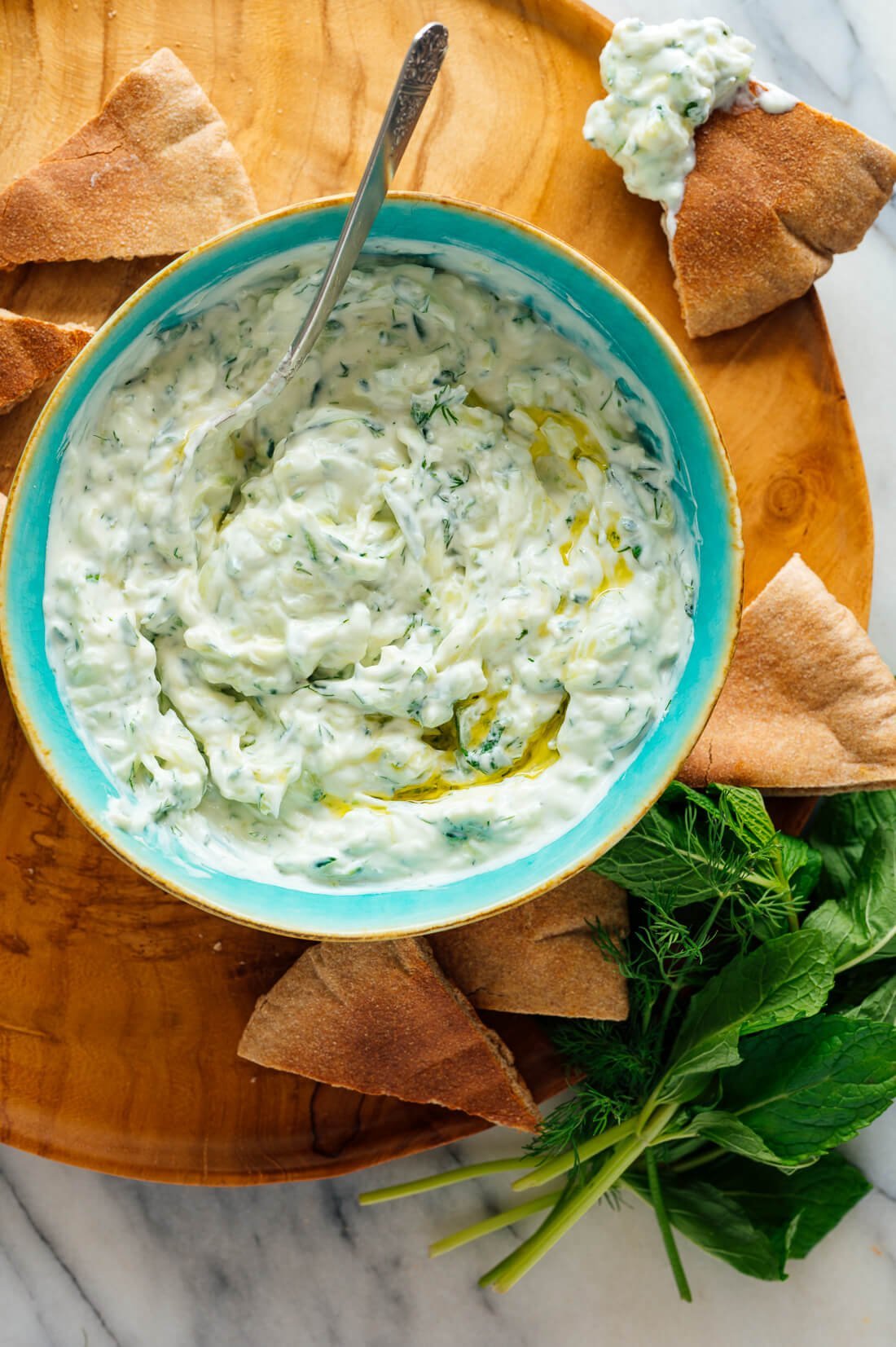
As always, please let me know how you like this recipe in the comments! I’m excited to hear how it turns out for you and how you serve it.
Watch How to Make Tzatziki Sauce
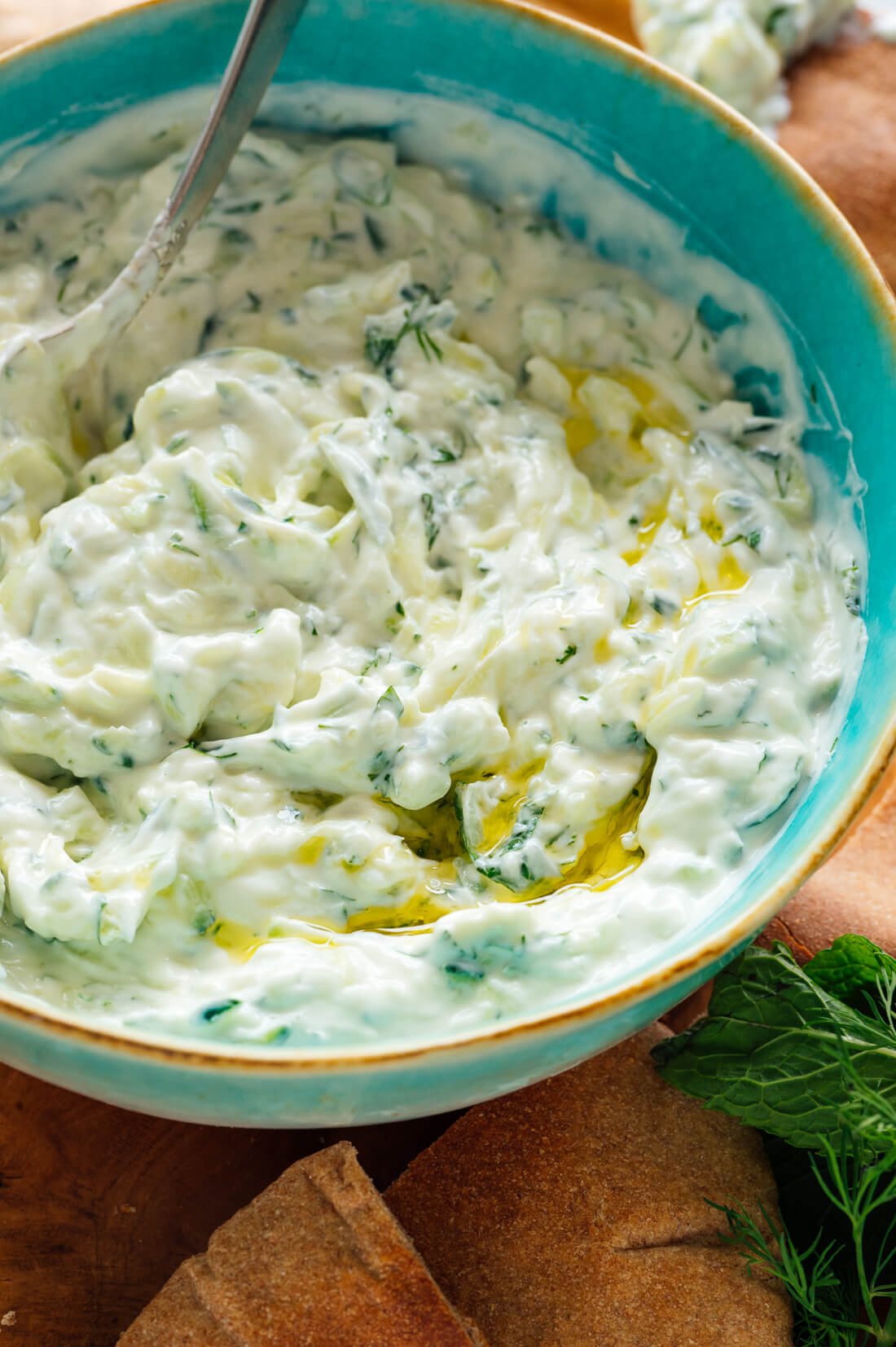
Best Tzatziki
Learn how to make tzatziki, a traditional Greek yogurt and cucumber sauce with fresh herbs. Tzatziki is a refreshing sauce or dip, and it’s so easy to make! This basic recipe yields about 2 ½ cups; multiply if necessary.
- Working with one big handful at a time, lightly squeeze the grated cucumber between your palms over the sink to remove excess moisture. Transfer the squeezed cucumber to a serving bowl, and repeat with the remaining cucumber.
- Add the yogurt, olive oil, herbs, lemon juice, garlic, and salt to the bowl, and stir to blend. Let the mixture rest for 5 minutes to allow the flavors to meld. Taste and add additional chopped fresh herbs, lemon juice, and/or salt, if necessary (I thought this batch was just right as-is).
- Serve tzatziki immediately or chill for later. Leftover tzatziki keeps well, chilled, for about 4 days.
Notes
Recipe adapted from my cookbook, Love Real Food.
Make it dairy free/vegan: Substitute an equal amount of cashew sour cream for the yogurt, and thin the tzatziki with a small splash of water if necessary.
Nutrition
The information shown is an estimate provided by an online nutrition calculator. It should not be considered a substitute for a professional nutritionist’s advice. See our full nutrition disclosure here.

